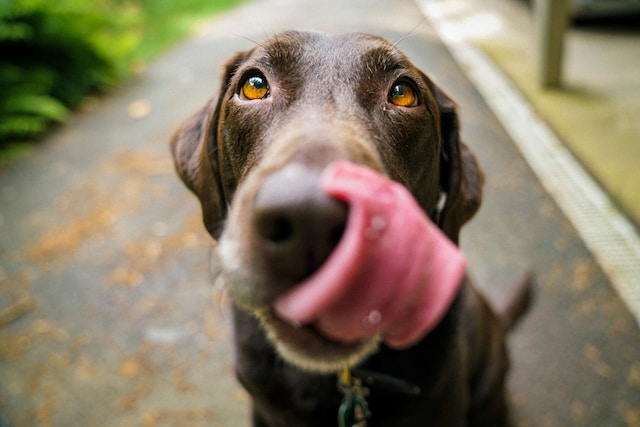While man’s best friend is such a wonderful addition to the family, one thing is for sure; there are some challenges to having a dog from time to time. They’re known for their constant barking, getting on furniture when they’re not allowed, leaving “surprises” in the wrong areas, and chewing up everything but their toys. But in the end, they’re so loved, but these things can’t happen.
In fact, not training your dog can lead to serious problems such as them attacking people, biting you or your family members, and so much more. This is why everyone needs to train their dog. It’s so important to train your dog and get them to become obedient.
Whether it’s a puppy or an old dog, it can be done. And yes, you can teach an old dog new tricks. So here is your ultimate guide for training your dog to be obedient!
Does the Breed Matter when Training?
To a degree, yes, the breed of your dog can impact the challenges of training them. There are some dogs, such as chows, who are very stubborn and prefer not to listen to their owners. But there are some dogs, such as labs, which are bred to be very obedient and easy to train. You can look into this site if you’re interested in getting one.
The age of your dog can also impact how challenging it can be. Puppies soak up everything like a sponge, which makes it easier to train.
However, this doesn’t mean you can’t train older dogs either, they just may be slightly more stubborn, but it is possible.
Start by Being Consistent With Your Commands
When training a dog, consistency is key. Your dog must know that every time you say a command, it is going to happen. It is recommended to train for at least 15 minutes per day, broken down into small lessons, and to stick with the same commands in the same locations.
For example, if you are training your dog to “come,” always use the same hand gesture and the same verbal command to get your dog to come.
Do not call your dog to come and then correct him in a different way (such as pulling on the leash, telling him to stay, or putting him in his crate) because this can confuse your dog. In general, you’re going to have to stay consistent and don’t even try to rephrase commands either.
Rewards are Always the Best Reinforcement
Nearly all pets are food-motivated, especially dogs. Training sessions are often most successful when the dog is hungry. It is important to be consistent with your rewards and not inadvertently reward undesirable behavior.
It is also important to use a hierarchy of rewards so that the most desirable behaviors get top rank and the least desirable behaviors aren’t getting any attention. This is especially important when teaching a command in a distracting environment.
Be sure to think about your movements too. If you are giving your dog a pat on the head, for example, and then asking them to do a longer sequence of commands, you are sending mixed messages to the pup, which can be counterproductive to training.
It’s best to be consistent with your training treats, verbal praise, and body language when trying to encourage a desired response.
It’s Fine to Punsih from Time to Time
While positive reinforcement will always be the best option, sometimes, it’s okay to opt for punishment if positive reinforcement doesn’t seem to work. It’s important to be consistent with your punishments when training an obedient dog.
Otherwise, your dog might think that you’re rewarding the behavior they’re trying to do. This is especially true with negative behaviors, like jumping up to greet you, trying to run while walking them, or chewing on the couch. You have to be stern, and dogs can pick up when you’re mad at them. They know when they do something wrong when they see how mad and stern you get.
Show Your Body Language
Dogs can’t learn if they get mixed messages from their owners. If you call your dog to you and then do something negative, like telling them not to jump on the couch or putting them in their crate, you’re reinforcing the behaviors you don’t want. You need to be clear with them, and body language and signals are going to help.
If you think about it, chances are, you’ve used hand signals and body language when teaching children, so it’s somewhat similar.
Be consistent with your body language, and make sure that all family members are on the same page when training your dog. It’s going to be up to you, but pointing down when saying “sit” or swirling your finger when you say “roll over” is going to help them learn.
Having a Command Voice
You don’t want to yell or scream at your dog; that’s not going to work. In fact, that’s actually going to be fairly abusive.
So instead, just have a commanding voice, that way, your dog knows that you’re being serious. Ideally, you should have a voice when you’re rewarding them, one when you’re commanding them, and one for punishing, as it helps them differentiate what you want. You don’t want to confuse your dog, so this is the best course of action.
Try and Make It Fun
Training isn’t always a piece of cake, but it is important to keep it fun for you and your dog. Playing games or adding in short play sessions between repetitions of basic obedience commands helps your dog remember what they’re being asked to do.
For example, if you’re trying to train your dog to stay when you say “down,” try starting small by holding a treat above their nose and slowly lowering it down towards their tail. Games like Tug of War can actually be a great way to get them to learn. Like children, doing something fun helps make things stick better to a dog’s memory.
Keep Commands Short and Simple
Even if your dog is already an obedient adult, they’re going to benefit from some basic obedience training. The most common obedience commands are Sit, Down, Stay, Come, Heel, and No. Ideally, you should only give one or two-word commands, nothing like a phrase or long sentence. You need to keep in mind their brains are similar to a toddler, so too many words are going to confuse them.
Stay Patient
It is important to be patient when training an obedient dog. This doesn’t mean that you shouldn’t be firm and confident with your dog, but it does mean that you should allow time for the training to be effective. Mastering basic obedience commands is a crucial part of being a responsible pet owner.
If you find that your dog isn’t responding to certain commands or is showing signs of anxiety in new situations, seek help from a professional trainer. This could make both of you happier in the long run! It’s also a great way to bond with your dog. Dogs don’t magically learn and understand everything instantly; you need to have patience and plenty of it.
In the end, as a dog owner or future dog owner, you’re going to need to train your dog. This isn’t only about living an easy life with them, but you also need to keep in mind that your property can easily get damaged if your dog isn’t trained.
Also, there’s always the chance that you, your family, other pets, or people in your surroundings may be at risk of getting attacked by your dog. You have to train your dog, and you’re going to have to be very persistent about all of this too.
Be a good owner, be a responsible owner, and train your dog today.

